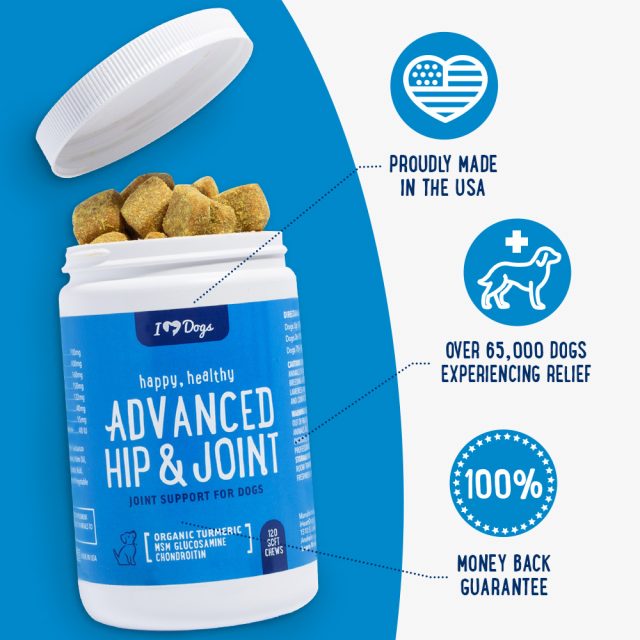Sore joints are most often associated with senior dogs, but some pups begin experiencing symptoms as early as late puppyhood when their bodies stop growing.
As important as it is to provide joint care supplements to older dogs, starting early – before the symptoms of joint inflammation, arthritis or hip & elbow dysplasia become apparent – can be incredibly beneficial.

Dogs of all ages can safely enjoy the advantages of joint supplementation, but adults and seniors are most in need. Once growth stops after puppyhood, the amount of glucosamine produced by the body begins to progressively decrease.
The glucosamine found in high quality joint suppplements helps build and replenish the natural cartilage cushion between the bones of the joints. This is especially important for the many breeds born with a predisposition for joint disease.

The following breeds are known to experience more severe and early symptoms of arthritis, hip & elbow dysplasia, and general joint inflammation. Beginning a joint supplement in young adulthood may be especially beneficial for them.
- American Staffordshire Terriers
- Bloodhounds
- Basset Hounds
- Bernese Mountain Dogs
- Catahoula Hounds
- Chow Chows
- Chesapeake Bay Retrievers
- Dachshunds
- English Bulldogs
- French Bulldogs
- German Shepherds
- Great Danes
- Golden Retrievers
- Labrador Retrievers
- Neopolitan Mastiffs
- Norwegian Elkhounds
- Newfoundlands
- Otterhounds
- Old English Sheepdogs
- Pit Bulls
- Pugs
- Rottweilers
- Saint Bernards
- Shih Tzus

While early treatment and prevention are ideal, many dogs do not receive the relief of joint supplements until they are seniors. Dogs are extremely stoic and often able to mask their pain for years until the tell-tale limping that signifies severely achy joints sets in.
In other cases, older dogs are rescued or re-homed with pre-existing joint pain. Luckily, it is never too late for your dog to reap the benefits of glucosamine, chondroitin, and the many other active ingredients found in high quality joint supplements.

In addition to the glucosamine these dogs so desperately need, superior joint supplements like iHeartDogs Advanced Hip & Joint Chews are made with a unique combination of active ingredients to meet the needs of any dog – even those with food allergies!
The Hypoallergenic Hip and Joint supplement is a great choice for dogs with a predisposition for joint pain that have yet to display outward signs. It is designed to keep pups feeling their best by supporting normal joint function, flexibility, and healthy joint cartilage.
Senior dogs and those already feeling the affects of joint degeneration may be better suited for the Advanced Hip & Joint soft chews. They pack a powerful punch of active ingredients to provide natural relief from joint distress. Your dog could have improved flexibility, reduced inflammation, and stronger cartilage in a matter of weeks.
All Happy, Healthy supplements are proudly made in the USA using cold press extrusion to preserve the viability of the nutrients. They are also the only supplements for dogs that give back to shelter animals by providing healthy food to pups awaiting their forever homes!
Don’t let your pup suffer in silence when relief could be as simple as a delicious once-a-day treat!
These statements have not been evaluated by the Food and Drug Administration. This product is not intended to diagnose, treat, cure, or prevent any disease. The information on this website is not intended to replace a one-on-one relationship with a qualified healthcare professional.



